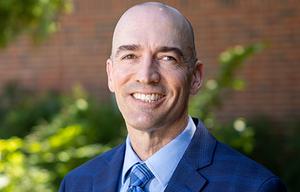
Higher Education
Ray Carter | December 17, 2024
Study: OU practices not caused by state ‘disinvestment’
Ray Carter
This year, a majority of freshmen students at the University of Oklahoma are not from Oklahoma, accelerating a trend that has been ongoing for several years.
While more Oklahomans are attending OU than in the past, the school’s enrollment growth over the last decade has been primarily the result of out-of-state students enrolling. While such students are common at universities across the country, it is unusual for nonresident students to comprise a majority of freshmen enrollees at a state school, based on publicly available information from several schools in the region.
Those out-of-state students do represent a cash cow for universities, however. At OU, a November slide presentation noted that OU receives net tuition revenue of just $1,130 per resident freshman from students who are residents of Oklahoma, compared to $6,313 for nonresident freshmen students.
Has OU chosen to boost the enrollment of nonresident students to gain those extra tuition dollars as part of a strategy to offset reductions in state appropriations?
A new report examines that question and comes to a definite conclusion: No.
A Nov. 14 report by Andrew Gillen, a research fellow at the Cato Institute’s Center for Educational Freedom, reviewed state funding for colleges in all 50 states from 1980 to 2023 and concluded that “state disinvestment is a myth.” The report said the trends “disprove the common argument that tuition has been rising over the past several decades to offset cuts in state funding.”
When examining changes in per-pupil funding per year, the report found that 24 states have been increasing funding over time while 20 other states—including Oklahoma—“show no statistically convincing upward or downward trend.”
The Cato report estimated that state funding for Oklahoma colleges has dropped only $2 per student since 1980, although funding has fluctuated in line with state economic activity, declining slightly during downturns before rebounding in times of economic growth.
The report said persistent claims of state disinvestment in colleges are the result of “cherry-picking data and failing to adjust for inflation.”
At the same time, the report showed college tuition steadily increased from 1980 to 2023, even after adjusting for inflation.
“One reason the myth of state disinvestment matters is that it is used to argue that state disinvestment leads to higher tuition,” Gillen wrote. “According to this argument, since it costs a certain amount to provide an education, colleges need to raise tuition to fill in the gap if state funding declines.
“The main problem with this argument is that states have been increasing funding over time, not cutting it,” Gillen continued. “This means that if tuition were adjusted to offset changes in state funding, then tuition should have been falling, not rising.”
As with most states, Gillen found that tuition increases in Oklahoma far outpaced changes in state funding for colleges and universities.
Information contained in a presentation made by university officials to members of the University of Oklahoma Board of Regents at that group’s November meeting also indicated that state funding is not driving OU’s financial strategy.
The presentation to OU regents noted that per-student state appropriations to OU have increased from $4,856 per student in 2022 to $5,700 in the 2024 budget year.
[For more stories about higher education in Oklahoma, visit AimHigherOK.com.]

Ray Carter
Director, Center for Independent Journalism
Ray Carter is the director of OCPA’s Center for Independent Journalism. He has two decades of experience in journalism and communications. He previously served as senior Capitol reporter for The Journal Record, media director for the Oklahoma House of Representatives, and chief editorial writer at The Oklahoman. As a reporter for The Journal Record, Carter received 12 Carl Rogan Awards in four years—including awards for investigative reporting, general news reporting, feature writing, spot news reporting, business reporting, and sports reporting. While at The Oklahoman, he was the recipient of several awards, including first place in the editorial writing category of the Associated Press/Oklahoma News Executives Carl Rogan Memorial News Excellence Competition for an editorial on the history of racism in the Oklahoma legislature.